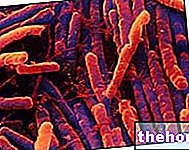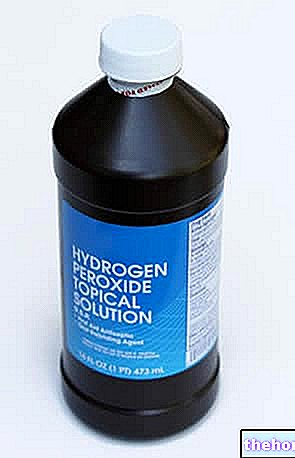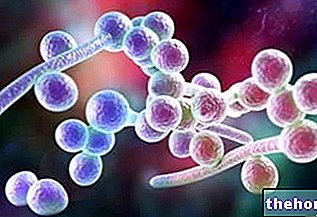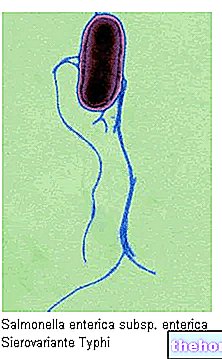The epidemiological data of the moment say that: SARS-CoV-2 is present in over 200 countries of the world, approximately 113 million people have fallen ill with COVID-19 throughout the globe (February 2021) and, of these, no 2.5 million died.
SARS-CoV-2 is a virus that mainly affects the respiratory tract, causing symptoms such as cough, cold, fever and, in severe cases, breathing difficulties; sometimes, however, it can also induce systemic inflammation, causing sepsis, heart failure and multi-organ dysfunction.
SARS-CoV-2 infection is particularly dangerous for individuals over-60, for those with chronic diseases (eg: diabetes, coronary artery disease) and for people on therapy with immune system depressant drugs (eg: chemotherapy, immunosuppressants ).
This article aims to analyze the structure, genome and proteins of SARS-CoV-2, and to provide fundamental information related to the pathogenesis of the virus.
For further information: SARS-CoV-2: How to Recognize the First Symptoms and What to Do , SARS-CoV-2 is a positive single-stranded RNA virus with pericapsid (or envelope).
The pericapsid is a sort of envelope placed around the capsid of some viruses; it is made up of phospholipids and glycoproteins.
SARS-CoV-2 possesses a genome of 29,881 nitrogenous bases, which codes for 9,860 amino acids.
This genome is divided into genes for structural proteins and genes for non-structural proteins.
The structural protein genes encode the spike protein (abbreviated to S), pericapsid protein (abbreviated to E, from envelope), membrane protein (abbreviated to M), and nucleocapsid protein (abbreviated to N).
As the name suggests, structural proteins combine to form the structure of SARS-CoV-2.
The genes for non-structural proteins, on the other hand, encode proteins, such as the protease similar to 3-chymotrypsin, the protease similar to papain or the RNA-dependent RNA polymerase, whose functions are regulating and directing the replication processes. and virus assembly.
Below is a description of the individual structural proteins, with a focus on protein S, and of the non-structural proteins.
Did you know that ...
SARS-CoV-2 shares approximately 82% of its genome with the SARS-CoV (responsible for SARS) and MERS-CoV (responsible for Middle Eastern respiratory syndrome) coronaviruses.
To learn more: Coronavirus: What are they? the appearance of a crown (hence the term "Coronavirus").
The spike protein weighs 180-200 kDa (read kiloDalton) and is made up of 1,273 amino acids.
Spike is made up of two major amino acid components, called S1 subunits (14-685) and S2 subunits (686-1.273):
- The S1 subunit hosts an amino acid sequence known as RBD (English acronym for "Receptor Binding Domain", ie receptor binding domain), which is essential for binding the virus to the cells of the host (ie the human being).
- The S2 subunit, on the other hand, is the site of amino acid sequences (fusion peptide, HR1, HR2, transmembrane domain and cytoplasmic domain), whose final function is to favor the fusion and the entry of the virus into the host cells.
In its native state (i.e. when the virus is not infecting anyone), the spike protein is in the form of an inactive precursor. When the virus encounters a potential organism to be infected, however, it immediately switches to an active form: the proteases of the target cells trigger the activation process (so it is the host itself that activates it!), Which "break" "the spike and form the S1 and S2 subunits.
How SARS-CoV-2 Spike Protein Works

The functioning of the SARS-CoV-2 spike protein is complex; the article in question aims to simplify it as much as possible, so that it can be understood by readers.
The spike protein is essential for initiating the host infection process; in other words, it is the weapon that the Novel Coronavirus uses to cause the infection known as COVID-19.
The spike-driven infection process can be divided into two stages:
- The binding to the host cell. It is the phase in which the virus attacks and binds itself to the cells of the organism which it will then infect.
- The fusion of the viral membrane (essentially of the virus) with the membrane of the host cell. It is the phase that allows the virus to enter the cells of the attacked organism and spread its genome there.
Binding to host cells
The spike protein binds to host cells through the RBD sequence of the S1 subunit.
Scientific studies have observed that the RBD sequence binds to host cells by means of an "interaction with the ACE2 receptor placed on the surface of the plasma membrane of the cells themselves.
ACE2 is an enzyme and is homologous to ACE, the protein responsible for converting angiotensin 1-9.
In humans, ACE2 is found mainly on the surface of the plasma membrane of the cells of organs such as lungs, intestines, heart and kidneys.
Once the S1 subunit is bound to ACE2, the S protein begins to change conformation; this event serves to favor the fusion phase and the entry of the virus into the host cell.
The binding to ACE2 and the resulting conformational change are two fundamental aspects for the realization of the vaccine against SARS-CoV-2 and for understanding the mechanisms of antigenicity and immune response implemented by the host.
However, there is a problem that must be considered: mutations in the S1 subunit and, in particular in the RBD sequence, could change the way in which the conformational change develops; consequently, this could affect the antigenic characteristics and efficacy vaccines (to learn more about the topic, we recommend reading the article dedicated to the variants of SARS-CoV-2).
Host Cell Fusion
The spike protein fuses the virus to the host cell through the amino acid sequences of the S2 subunit.
The virus fusion process takes place on the wave of the conformational change of protein S induced by the bond between RBD and the host ACE2 receptor: the change in spike conformation, in fact, brings the viral membrane closer to the plasma membrane of the host cell, up to to the interaction, to the fusion between membranes and, finally, to the incorporation of the infecting virus.
Once the viral genome is inside the host cell, the virus begins its replication and the infection process can be considered complete.
For further information: Spike Protein Mutations: SARS-CoV-2 Variants mature, with its nucleic acid (DNA or RNA) enclosed in a protein capsule, called capsid.The studies in this regard have shown that the SARS-CoV-2 protein E is a viroporin, which, once in the host cell, goes to localize on the membrane of the Golgi apparatus and of the endoplasmic reticulum, to facilitate assembly and release of virions.
A viroporin is a viral protein that acts as a membrane channel within the host's cells.
The SARS-CoV-2 protein E is very similar to that of SARS-CoV, while it has some differences from that of MERS-CoV.
viral, called proteases and produced early by the virus; these proteases take care of "cutting" the polyproteins in precise points, in order to give rise to the single non-structural proteins.
The polyprotein strategy (from which smaller proteins are derived) is very common among viruses.
It is interesting to specify that, before the cutting work, the proteins still included in the polyproteins are inactive, non-functional; they become functional only after the intervention of the proteases and their cleavage with respect to the major amino acid chains.
The main function of the non-structural proteins of SARS-CoV-2 is to deal with the transcription and replication of viral RNA.
However, it should be noted that these proteins are also involved in viral pathogenesis.
SARS-CoV-2 protease
Two non-structural proteins fundamental for SARS-CoV-2 are, undoubtedly, the proteases that deal with "cutting" the polyproteins and forming the proteins useful for the transcription and replication of viral RNA.
These proteases are known as 3-chymotrypsin-like proteases (abbreviated to 3CLpro) and papain-like proteases (abbreviated to PLpro).
Considering that the proteins to which they give rise then serve to propagate the infection in the host, the proteases in question represent an interesting pharmacological target.
RNA RNA-dependent polymerase
RNA-dependent RNA polymerase is the non-structural protein of SARS-CoV-2 essential for the replication of the viral genome destined for new virions.
This non-structural protein would also represent an attractive pharmacological target.
of the host and exploits them to translate its own genome into RNA and create the proteins necessary for the replication of the same genetic material and for the assembly of new virions.Based on the above, a key role in the transcription and replication of viral RNA belongs to non-structural proteins.
With the transcription and replication of the viral genome, SARS-CoV-2 begins to spread in the host, initiating the actual infectious disease.
In this phase, the virus acts on the host organism both with a cytocidal activity (ie that kills the cells) and with immune-mediated mechanisms.
As far as cytocidal activity is concerned, the evidence suggests that SARS-CoV-2 induces apoptosis (cell death) and cell lysis; more specifically, it has emerged that the virus produces syncytia within the infected cell and causes cell rupture. "Golgi apparatus, after replication.
As for the immune-mediated mechanisms, research has shown that SARS-CoV-2 involves both the innate and adaptive immune systems (antibodies and T lymphocytes).
Why is SARS-CoV-2 more infectious than the SARS Coronavirus?
SARS-CoV, the coronavirus responsible for SARS, also invades the host cells by exploiting the interaction between RBD and the ACE2 receptor present on the cells of the respiratory tract.
However, there is an important difference between this type of binding and the one put in place by SARS-CoV-2: the RBD sequence of the Coronavirus responsible for COVID-19 has much more affinity for ACE2 and binds to it much more efficiently. , resulting much more effective in the invasion process of host cells.
Scientific studies in this regard have shown that the difference in interaction described above is due to a different amino acid composition between RBD of SARS-CoV and RBD of SARS-CoV-2; in particular, there are two amino acid regions with important differences.
This difference in affinity explains several aspects:
- Why SARS-CoV-2 has a higher R0 than SARS-CoV;
- The reason that drugs and vaccines that targeted the SARS-CoV RBD sequence and appeared to be effective are not suitable against SARS-CoV-2.
What is R0?
Also known as the "base reproduction number", R0 represents the average number of secondary infections produced by each infected individual in a fully susceptible population (ie never in contact with the new emerging pathogen).
This parameter measures the potential transmissibility of an infectious disease.
Pro-inflammatory cytokines arise from the activity of certain cells of the immune system.
Under normal conditions, they serve to regulate the immune response, inflammation and hematopoiesis.
Furthermore, clinical data and other research have shown that the overproduction of pro-inflammatory cytokines seen in the presence of a severe SARS-CoV-2 infection can spread to other organs (e.g. the heart), causing them to dysfunction, and affect the coagulation processes, inducing the formation of thrombus.
When SARS-CoV-2 triggers extensive overproduction of pro-inflammatory cytokines, experts refer to the phenomenon as "cytokine storm syndrome".
















.jpg)











